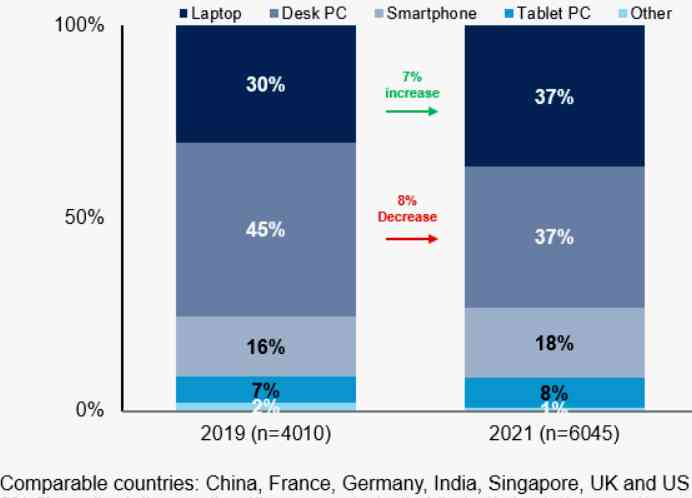Covid-19 has really transformed the relationships between workers and technology beyond any limits. This change in relationships occurred due to the enormous dependency on digital collaboration tools and IT self-service requirements.
Nearly one in five workers (18%) consider themselves to be digital technology experts since COVID-19, revealed a Gartner survey.
An increased reliance on digital collaboration tools and lack of in-person IT support while working remotely altered many workers’ relationships with technology.
Gartner Distinguished Research Vice President Whit Andrews workers seized on the crisis to improve their mastery of a wide range of technologies and applications in the space of a few months.
“Today’s workplace is vastly different from 2019’s, and CIOs must prepare their technology stacks, office spaces, IT teams and mindsets to embrace the new future of the digital workplace,” added Andrews.
Workplace experience
Conducted last year between November and December, the survey polled 10,080 full-time employees at organisations with 100 or more employees in the U.S., Europe and Asia-Pacific. It aimed to better understand workers’ technological and workplace experiences and sentiments.
The Gartner survey found that digital workers increased their reliance on portable devices during 2020. Workers reported an 11% increase in the proportion of their work time spent on laptops, smartphones or tablets. The proportion of their time spent on desktops declined by 8% (see Figure 1).

The survey also showed a rise in the number of workers using personal technology for work purposes. Over half of respondents use applications or web services that they personally obtained. Employer sanctioned most of these applications or services for collaborating with other workers.
Technology shortcoming
The same proportion (55%) are using personally owned devices for their work at least some of the time. “When organisations were forced to go remote in early 2020, workers started to rely on their own devices or programs they discovered themselves to make up for their employers’ technology shortcomings,” pointed out Andrews.
“In 2021, organisations can embrace this trend by expanding the choice of devices and software programs that workers can use with little or no friction,” he added.
Increased Productivity
One of the main questions lingering among executives regarding the impacts of the last year is remote work’s effect on productivity.
As per the Gartner survey, among employees whose work-from-home time increased since January 2020, 36% reported an increase in productivity, while 35% reported no change. Flexibility in working hours was the most cited factor enabling greater productivity, selected by 43% of respondents.
“Now that many workers have had a taste of the flexibility that remote work offers, it will be a key factor in hiring and talent acquisition,” said Andrews.
“In fact, 69% of workers in our survey said they were more likely to consider a new role that allows them to work from a location of their choice, and 64% were more likely to consider a role that allows for flexible hours,” he noted.
A quarter of workers surveyed did report that their productivity fell. Connectivity issues and technology changes were among the top reasons cited for decreased productivity.
“Digital proficiency becomes even more essential for productivity when working remotely. CIOs should extend worker-to-worker lateral mentoring and training to ensure no employees are left behind as technology mastery becomes the expectation,” concluded Andrews.





